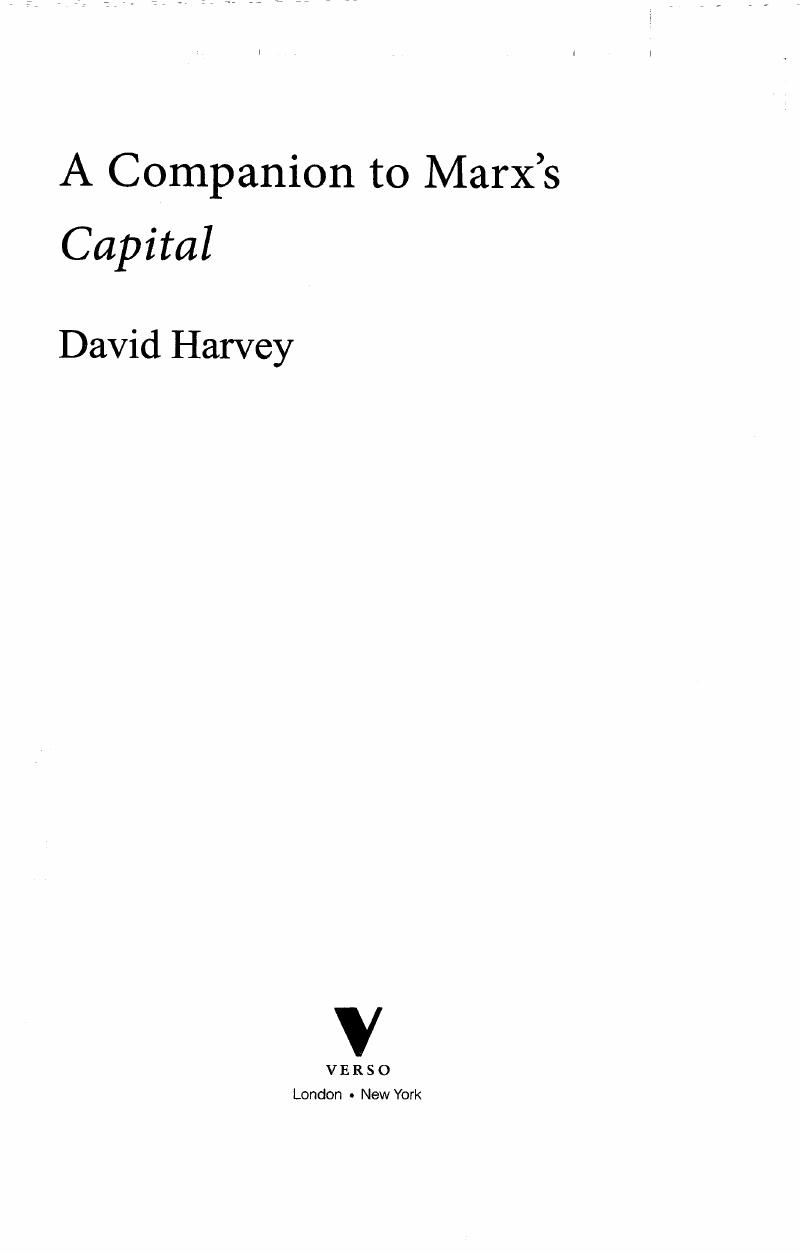A Companion to Marx's Capital by David Harvey

Author:David Harvey [Harvey, David]
Language: eng
Format: epub, mobi, pdf
Tags: economics, bigred
ISBN: 9781844673582
Goodreads: 7316687
Publisher: Verso
Published: 2010-03-01T00:00:00+00:00
CHAPTER 13: CO-OPERATION
The three chapters that follow deal with the various ways in which capitalists can procure relative surplus-value of the individual sort. The overall focus is on whatever it is that raises the productivity of labor, and it is clear that this depends on organizational forms (cooperation and divisions of labor), as well as on machinery and automation (technology, as we usually think of it). This can create some confusion, since Marx sometimes bundles all these strategies together under the heading “productive forces,” but then on occasion uses the term “technology” as if it were the same thing. He is clearly as interested in organizational form (the software, as it were) as he is in the machines (the hardware). I think it best to assume that Marx’s theory of technology/productive forces is machinery plus organizational form. I find his stance on this particularly relevant since, in recent times, transformations in organizational form—subcontracting, just-in-time systems, corporate decentralization and the like—have played a major role in the quest to increase productivity. While the profitability of Wal-Mart has its basis in the exploitation of cheap Chinese labor, the efficiency of its organizational form sets it apart from many of its competitors. Similarly, the Japanese conquest of the US auto market at the expense of Detroit had as much to do with the organizational form (just-in-time and subcontracting) of the Japanese car companies as with the new hardware and automation they deployed. Indeed, ever since time-and-motion studies (and what became known as Taylorism) became fashionable around 1900, there has always been a strong link between the hardware and the software of capitalist production systems.
Marx begins by examining how two organizational forms—cooperation and divisions of labor—can be used by capital under existing technological conditions of artisanal and handicraft labor to increase productivity. Innovations in these two aspects of organizational form have been integral to the acquisition of relative surplus-value throughout the history of capitalism, and we should never forget them. As in the chapter on the labor process, however, where the potential nobility of the process is stressed in contrast to its alienated form under capitalism, Marx casts neither cooperation nor division of labor in an inherently negative light. He views them as potentially creative, beneficial and gratifying for the laborer. Cooperation and well-organized divisions of labor are wonderful human capacities that add to our collective powers. Socialism and communism would presumably have great need of them. What Marx will seek to show is how these positive potentialities are seized on by capital to its own particular advantage and thereby turned into something negative for the laborer.
“When numerous workers work together side by side in accordance with a plan, whether in the same process, or in different but connected processes, this form of labour is called co-operation.” Note the word “plan” here, since it’s going to become an important idea. Cooperation permits, for example, an increasing scale of production, and the resultant economies of scale can generate increases in labor efficiency and productivity. This is made much of in conventional economic theory, and Marx does not demur.
Download
A Companion to Marx's Capital by David Harvey.mobi
A Companion to Marx's Capital by David Harvey.pdf
This site does not store any files on its server. We only index and link to content provided by other sites. Please contact the content providers to delete copyright contents if any and email us, we'll remove relevant links or contents immediately.
| Anarchism | Communism & Socialism |
| Conservatism & Liberalism | Democracy |
| Fascism | Libertarianism |
| Nationalism | Radicalism |
| Utopian |
The Secret History by Donna Tartt(18851)
The Social Justice Warrior Handbook by Lisa De Pasquale(12143)
Thirteen Reasons Why by Jay Asher(8799)
This Is How You Lose Her by Junot Diaz(6796)
Weapons of Math Destruction by Cathy O'Neil(6147)
Zero to One by Peter Thiel(5689)
Beartown by Fredrik Backman(5600)
The Myth of the Strong Leader by Archie Brown(5427)
The Fire Next Time by James Baldwin(5250)
How Democracies Die by Steven Levitsky & Daniel Ziblatt(5129)
Promise Me, Dad by Joe Biden(5088)
Stone's Rules by Roger Stone(5027)
A Higher Loyalty: Truth, Lies, and Leadership by James Comey(4846)
100 Deadly Skills by Clint Emerson(4840)
Rise and Kill First by Ronen Bergman(4705)
Secrecy World by Jake Bernstein(4648)
The David Icke Guide to the Global Conspiracy (and how to end it) by David Icke(4628)
The Farm by Tom Rob Smith(4439)
The Doomsday Machine by Daniel Ellsberg(4417)
